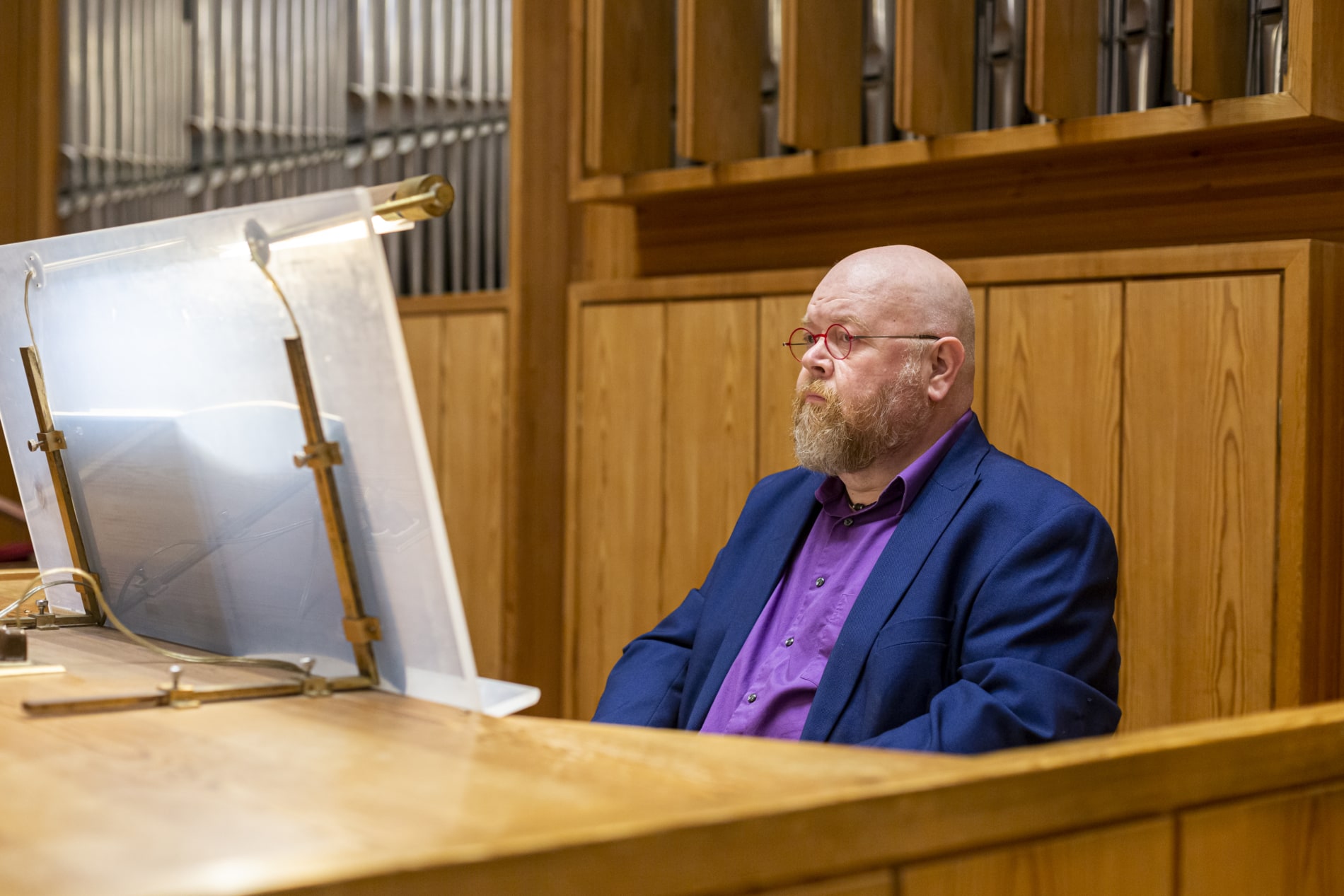Its tonal design reflects an eclectic, neo-classic ideal, with a stoplist including German, French, Italian, and Spanish elements encompassing three centuries of organbuilding history. It features open-toed voicing of pipes of high tin content, steady wind,and equal temperament; the tonal regulation is unusually meticulous. The stoplist is unique in having exactly the same number of stops on every division; the console design is patterned after the organs of Cavaillé-Coll, with manual order (from the bottom) Great-Positiv-Swell and terraced drawknob layout. There are 40 stops and 55 ranks, the number of pipes totaling 2,949. The mechanical key action is constructed entirely of wood. The facade design mirrors exactly the internal arrangements; the manual chest layouts are in tritones, the pedal chest layout in minor thirds. The case is of pine, measuring 21’x 21′.
Restoration work performed by the Frobenius firm in the early fall of 1995 included a thorough cleaning and through-tuning, a completely new stop action and SSL combination action, tonal re-regulation, and general mechanical refurbishing, including refelting, regulation and new pedal keys.
The organ is played an average of six hours each day by students from the Longy School of Music and Boston University. The organ is featured in a CD recording on the Conch Classics label entitled “Organ Music of Bach and Franck,” performed by James Johnson, Music Director of First Church from 1972 to 1977.
To hear samples of the organ played by Peter Sykes, our Director of Music, please enjoy the playlist below:
